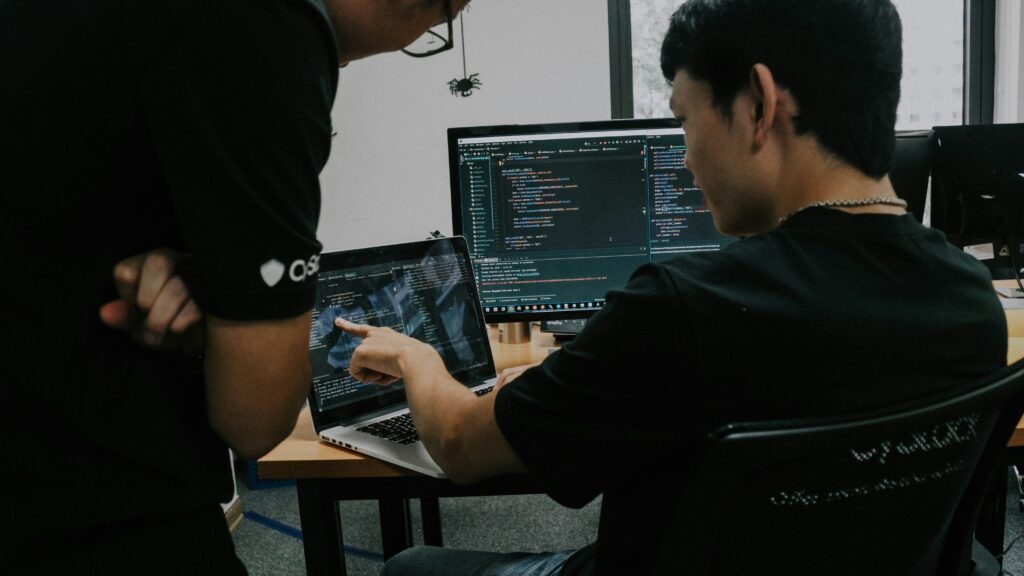Chapter 6: The Future of Risk Management for vCISOs
The vCISO role is continuously evolving as cyber threats become more sophisticated, businesses adopt new technologies, and regulatory landscapes shift. To remain effective, vCISOs must stay ahead of emerging risks, leverage AI-driven tools, and align risk management with business agility.
Evolving Threat Landscape: The Shift to Threat-Informed Risk Management

Cyber threats are no longer static—they evolve at an unprecedented pace. While important, traditional risk management methods focused on compliance-driven approaches can often fall short in addressing the dynamic nature and complexity of today’s emerging cyber threats.
Threat-informed risk management shifts from a static checklist-based approach to a dynamic, intelligence-driven strategy that prioritizes risk based on real-world threats and attack techniques.
Key Trends in the Evolving Threat Landscape
- Rise of AI-Driven Cyber Attacks – Adversaries are using AI for automated phishing, deepfake social engineering, and intelligent malware development.
- Supply Chain Risks – Organizations are more interconnected than ever, increasing exposure to third-party vulnerabilities.
- Zero-Day Exploits & Advanced Persistent Threats (APTs) – Attackers are becoming more sophisticated, targeting previously unknown vulnerabilities before patches can be deployed.
- Cloud & Hybrid Security Challenges – Businesses adopting multi-cloud and hybrid environments face increased attack surfaces and complexity in securing cloud workloads.
- Ransomware-as-a-Service (RaaS) & Cybercrime Networks – Ransomware operations are evolving into service-based business models, making attacks more frequent and damaging.
To stay ahead, vCISOs must incorporate threat intelligence into risk assessments, leverage MITRE ATT&CK frameworks to understand attack vectors, and use proactive security measures like threat hunting and red teaming.
Preparing for the Next Generation of Cybersecurity Risks
As technology advances, new security risks emerge. Future cybersecurity threats will extend beyond traditional IT infrastructure and impact emerging technologies like quantum computing, IoT, and decentralized finance (DeFi).
Emerging Cybersecurity Risks for vCISOs
- AI and Machine Learning Security Risks – AI models can be manipulated through adversarial attacks or biased datasets, leading to incorrect decision-making in security systems.
- Quantum Computing Threats – As quantum computers become more powerful, they will break traditional encryption methods, requiring businesses to prepare for post-quantum cryptography.
- Internet of Things (IoT) Security Challenges – The rapid growth of IoT devices increases attack surfaces and introduces risks from unpatched firmware and insecure APIs.
- 5G and Edge Computing Risks – Decentralized computing environments introduce new security challenges in data integrity and real-time attack detection.
- Deepfake & Social Engineering Attacks – The use of AI-generated media will increase identity fraud and executive impersonation threats.
Proactive vCISOs will need to anticipate these risks, implement security measures early, and influence business decisions on adopting emerging technologies securely.
Staying Agile and Adapting to Business Changes
Modern organizations evolve quickly, often shifting business models, adopting cloud-first strategies, and expanding remote workforces. vCISOs must ensure security and risk management remain aligned with these rapid changes without becoming a bottleneck.

How vCISOs Can Stay Agile
Shift from Static to Continuous Risk Management: Traditional risk assessments are point-in-time evaluations; vCISOs should implement continuous risk monitoring using security automation and AI-driven analytics.
| Integrate Security into DevOps (DevSecOps) | Security must become part of development and business workflows, ensuring risks are addressed early in the product lifecycle. |
| Leverage a Risk-Based Approach to Cybersecurity Investments | Organizations have limited security budgets—vCISOs must focus spending on mitigating high-impact risks, using threat intelligence to prioritize defenses. |
| Adapt to Evolving Regulatory & Compliance Requirements | New regulations like SEC cybersecurity disclosure rules, GDPR updates, and AI governance policies require flexible compliance strategies. |
| Develop Business Continuity & Cyber Resilience Plans | Business agility includes ensuring resilience against cyber incidents. vCISOs must establish robust incident response, disaster recovery, and cyber resilience strategies. |
The Role of AI in Future Risk Management
Artificial Intelligence is both a threat and an opportunity in cybersecurity. While attackers leverage AI for advanced threats, vCISOs can harness AI to enhance risk management, automate threat detection, and optimize security operations.
AI-Powered Risk Management for vCISOs
- AI-driven security tools analyze massive datasets in real time, detecting emerging threats faster than human analysts.
- Predictive analytics help forecast vulnerabilities before they can be exploited.